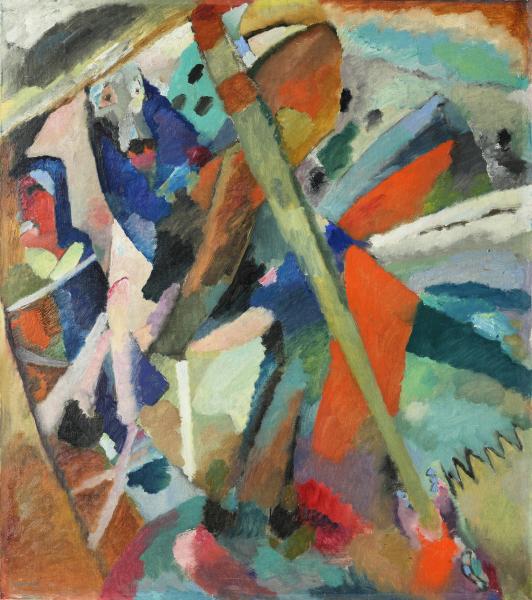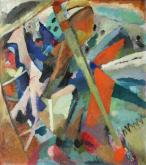St George (II)
1911
- Period Early 20th century
- CategoryAbstraction, Biblical Subject
- Share
Wassily Kandinsky often addressed the heroes of Old Russian painting in his oeuvre. One of his favourites was St George, who is frequently encountered in the artist’s painting and graphic art. Kandinsky transforms and reinterprets the image of the saint, gradually shedding the realistic outlines, while retaining the rhythmic harmony of colour formation. The artist was convinced that by rejecting objectivity and overcoming the material, he could better express the inner essence of the image. The only sound evoked by the rich and harmonic tones is a mighty and solemn chord symbolising the saint’s heroism and the victory of good over evil. Russian Museum: From Icons to the Modern Times. Palace Editions, St Petersburg, 2015. P. 319.
St George is from the very beginning of the artist’s abstract period. The Russian icons or lubki may have served as the impetus for the creation of this version of St George. In his chosen motif, the artist was not concerned with naturalistic collisions of battle, but its emotional atmosphere, the stress of combat, and the pathos and joy of victory. He achieved this with the composition itself and the development of its musical “drama”. In the chaos of filling the canvas with expressive spots of colour, the outlines of the rocks, the figures of the princess and the horseman, who is strikinga dragon, are still discernable. It gives rise to associations, and these recognisable details enrichthe image, making the layers of multiple meanings even stronger. But like musical sounds, the forms, combinations and contrasts of the spots of colour in this work are liberated from the shackles of havinga concrete subject, and are still able to convey the conditions of its creator’s soul and spirit.

